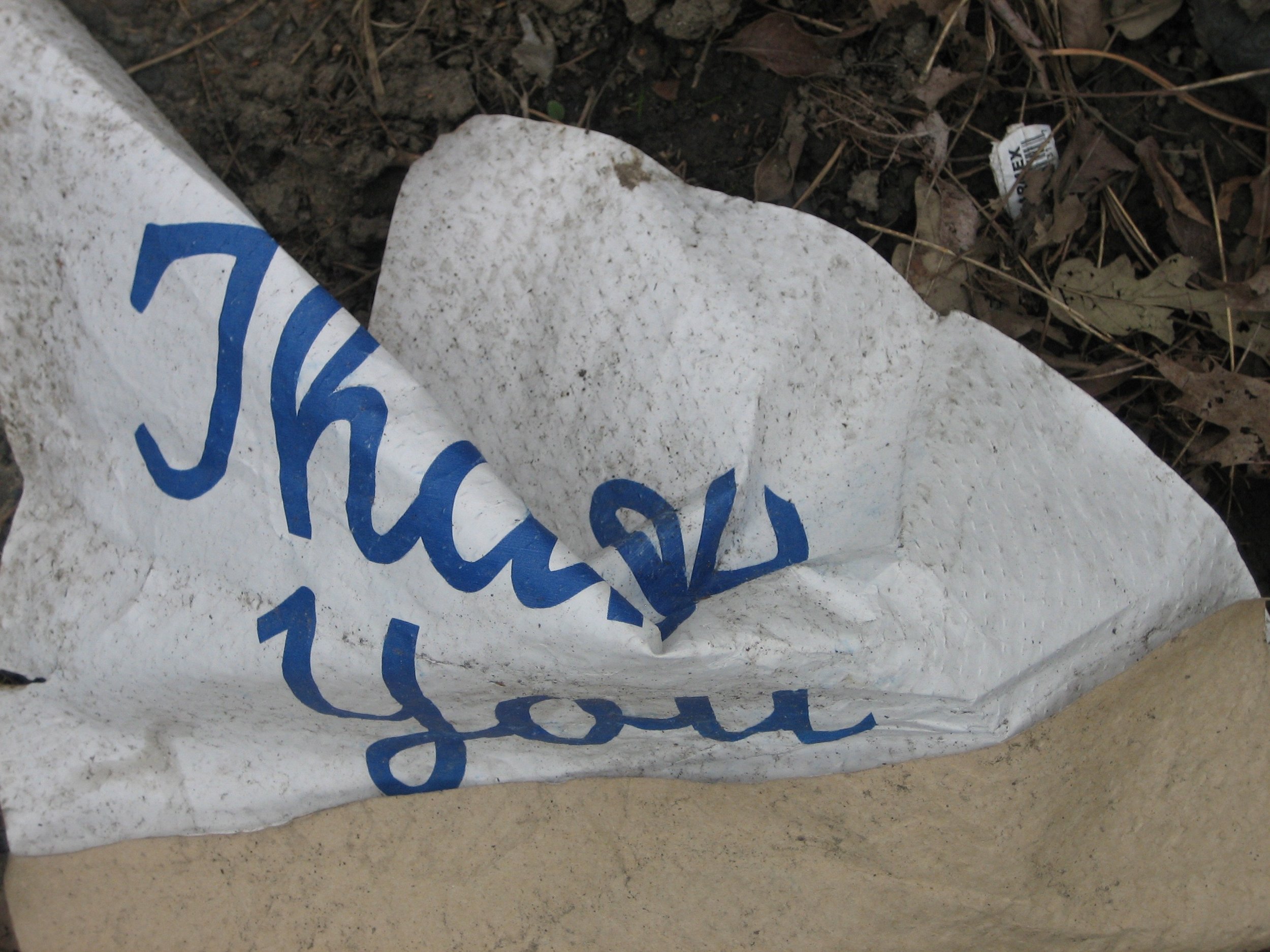Thank You, I Think
As I read the thank you letter the nonprofit had sent as the result ofmy gift, I thought about thanking a friend for a present. I certainly wouldn't start that, "On behalf of my husband, myself and our two dogs...." So why do nonprofits too often think that a thank you that is "on behalf of our board, our staff and especially our clients," is a good way to make me feel special?
It doesn't, you know. It looks and feels so pro forma. I just know this is the same thank you letter everyone gets, regardless of whether this is a first time gift, a follow on one, an additional gift or anything else.
If you are going to thank people, thank them like you mean it. As if you want to build a strong(er) relationship. As if they matter. As if their gift is meaningful.
wouldn't start that, "On behalf of my husband, myself and our two dogs...." So why do nonprofits too often think that a thank you that is "on behalf of our board, our staff and especially our clients," is a good way to make me feel special?
It doesn't, you know. It looks and feels so pro forma. I just know this is the same thank you letter everyone gets, regardless of whether this is a first time gift, a follow on one, an additional gift or anything else.
If you are going to thank people, thank them like you mean it. As if you want to build a strong(er) relationship. As if they matter. As if their gift is meaningful.
That, therefore, means your letter must say more than Thank you for your gift of a specific amount of money to support either your general operating fund, your mission or a specific project. It has to be personal. It has to connect your donor's generosity with the impact it creates.
Dear donor: Your ongoing generosity both pleases and humbles me. I am so thrilled that the work we do is meaningful to you. And your support reminds me of how important our work is--not just for our clients but also for our community. One of the perks of my job is the ability to see the effects of our work first hand......
There is, of course, a difference between a thank you and an acknowledgement. The former is about gratitude; the latter is about tax deductions. Don't confuse the two. So yes, am acknowledgement in the form of a receipt or a letter is important (required--for the donor at least--if the gift is $250 or more; $75 if they have bought a ticket to an event), but don't stop there. Add a thank you--or two (Jerry Panas says that you should thank donors 7 times; I don't think you need to count--just be sincerely grateful).
Gratitude, of course, should go beyond letters. Making sure the donor knows how her money was spent, what impact it had, how important it is in making the difference you make is critical. That mean nothing more than a newsletter with a personal note, but it might be an invite to see--up close and personal--how their generosity matters. Each donor should have a stewardship plan, even if at the lower end, it is a plan for "All annual donors at the $250 or lower level." And even there, make sure you are segmenting those who are first time givers--who should be made to feel that this is the start of a wonderful journey--from those who have become very loyal donors. Think about how you can value what they do while helping those who can and want to to move up the giving pyramid.
And yes, stewardship serves a selfish purpose. You want your nonprofit to have better retention rates than the norm. You also want to get larger gifts. But to do that, you also must make your donors feel that they are doing something important, because they are, and that what they do matters, because it does.
Janet Levine works to move nonprofits from mired to inspired. Learn more at www.janetlevineconsulting.com. While there, sign up for the newsletter and contact Janet for a free 30-minute consultation.
